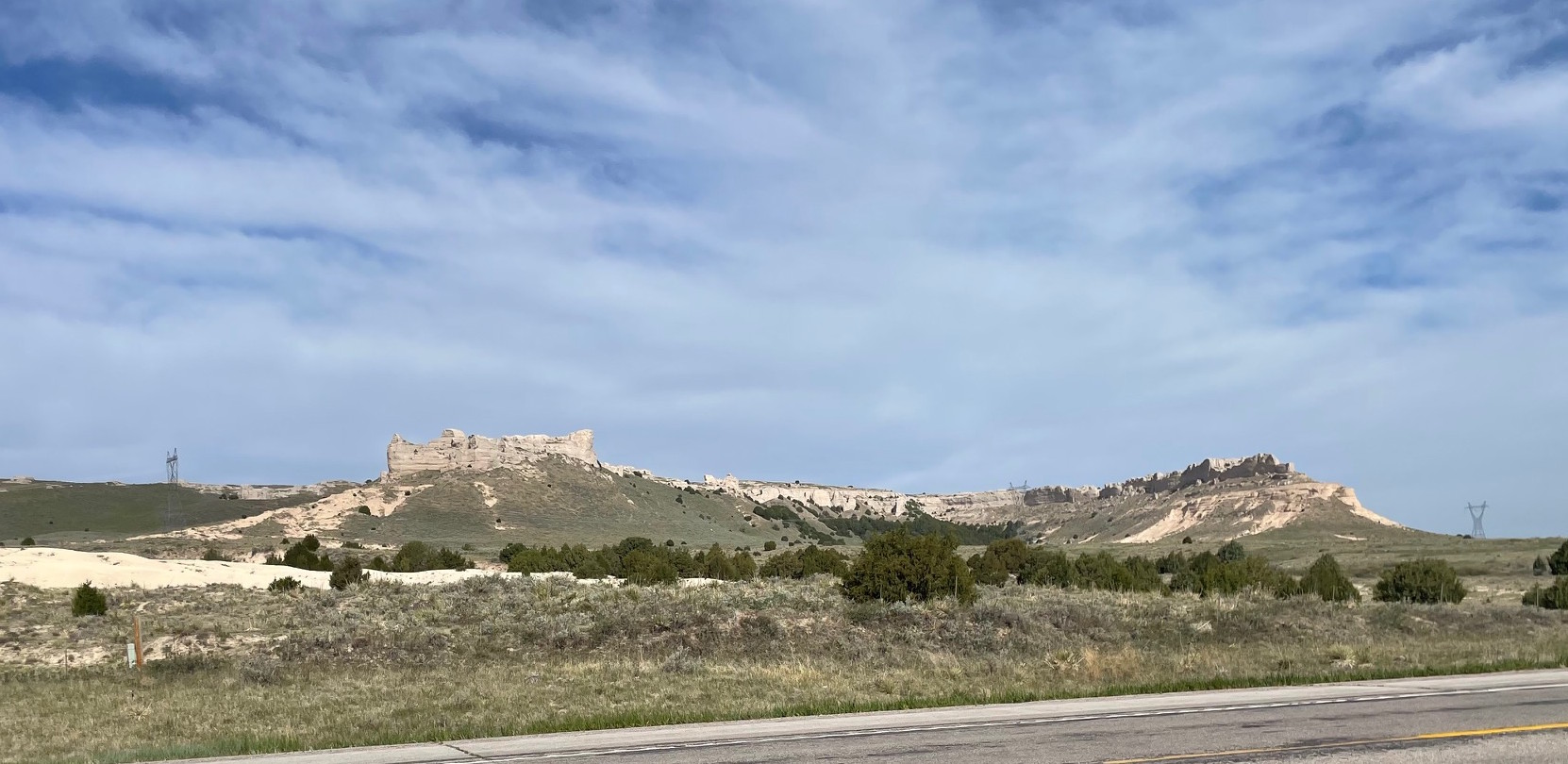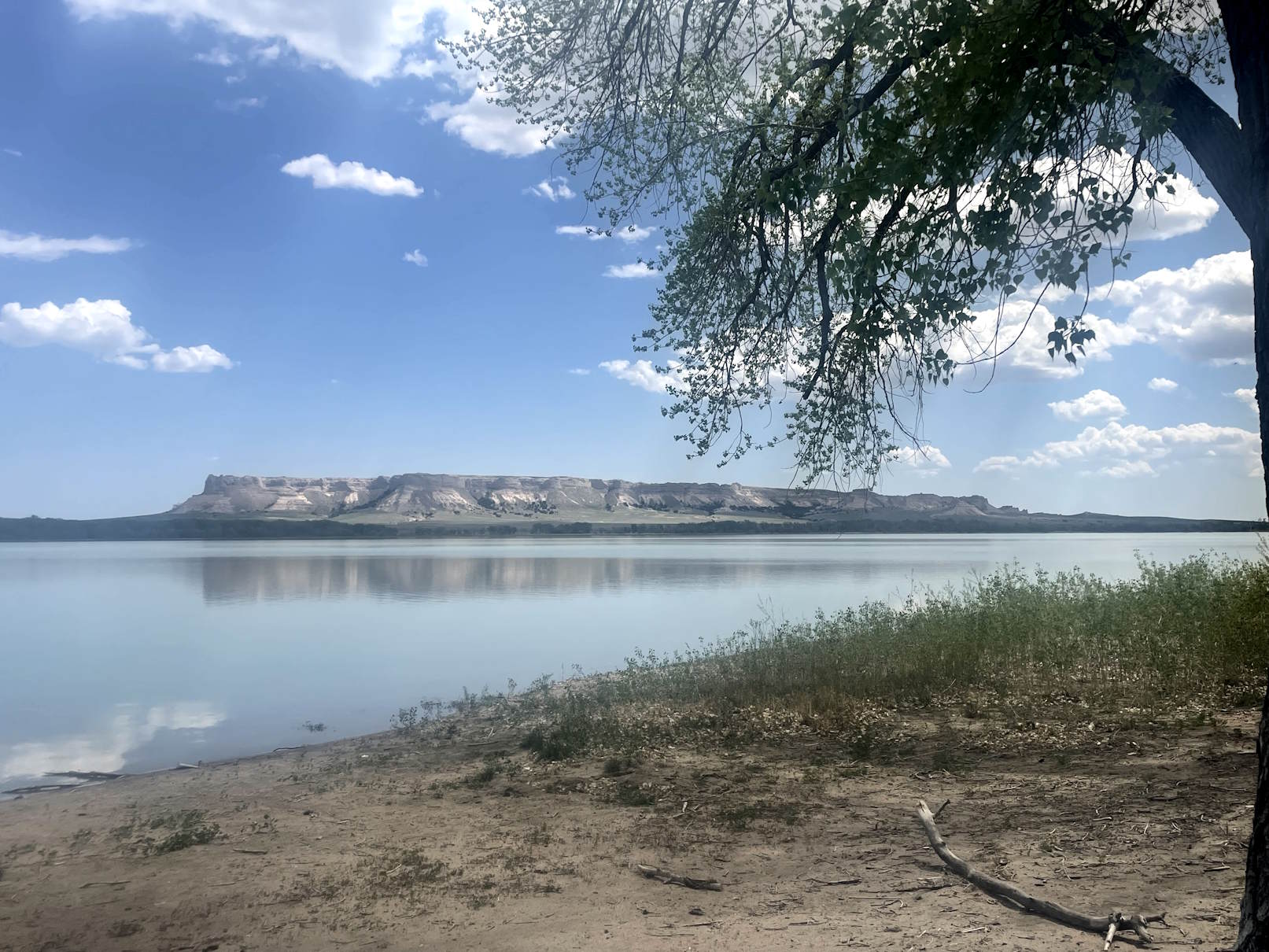Kevin – Tuesday. With a renewed commitment to start early, we roll out of bed at 5 AM, eat our oatmeal and head back to the Goshen overlook arriving there about 6:30. The sun has already been up for 45 minutes and we can feel the gentle heat.
Hee-hee. I con Denny into taking the first leg today. It’s a continuous, 5-mile downhill stretch that doesn’t require her to do any pedaling. She gets the award for the fastest 5-mile segment to date. Hee-hee.
We pass over Little Horse Creek where the detachments presumably encamped with Amasa Lyman on Saturday, June 12, 1847. They thought it was Horse Creek – but without reliable maps, they were guessing. Apparently, the water or forage wasn’t very good and they moved about 5 miles on Sunday the 13th to another creek - probably the real Horse Creek. One wonders why it isn’t ‘Big” Horse Creek.
SPECIAL REPORT: ‘Offal’ should be pronounced ‘Awful’ – [WARNING; Those with weak constitutions should skip this section.]
While biking one of my segments, the scent of cow pens – or something related to cows – began to be noticeable. Not unusual for this area, and I look upwind to the northwest to see if any pens are visible. None were. As I proceed for the next mile, the scent became progressively stronger until I was nearly … well … my tummy was getting upset at the strength of the scent. And then, the source of the scent became apparent. Some rancher had lost a load of offal headed to the rendering facility or the burial dump. It was SO RANK. Written words have no power to describe it.
Now, you may think I’m out of order to share such a gross description (believe me, the above doesn’t even come close), but there is a historical precedent for my tame story. In 1847 the traffic along the western trails hadn’t really begun in earnest. There’d been a few thousand immigrants, but nothing like what started in 1849 after the discovery of gold in California.
Journal descriptions for the Argonaut period relate the stench of dead cattle, mules, horses, and oxen was ever present for mile-after-mile-after-mile. Thousands of decaying animals lined both sides of the route. Did the people ever really get used to the smell? One wonders.
The vast majority of us don’t live in a world with barnyards, cattle pens with concentrated urine and fecal matter. We don’t clean out horse pens or use outhouses. We use sprays to mask the faint odor of our digestion. Ours is a sheltered life. Praise be!
We return now to our regularly scheduled program:
As we bike further into the Goshen Hole, we pass a series of mesas – one being Bear Mountain, named no doubt for its proximity to Bear Creek, one of the stronger streams of water. Down in the valley there are cattle ranches galore along the larger Horse Creek. It’s green and lush and beautiful. The mesas and cliffs provide a stark contrast – bleached and barren, rising up against the deep blue sky with mottled white clouds.

To push ourselves, Denny encourages me to go another 5 miles past the intended stop. That brings us to the little town of Hawk Springs, Wyoming (population 45, 2010 Census). We want to get to Torrington tomorrow – a day early.
Our camp is again at Hawk Springs Recreational Park, about 5 miles east of Bear Mountain. It’s a reservoir and maintained by Wyoming State. Fishing is good we’re told. With no facilities other than pit toilets, it’s overpriced, it’s windy, but WOW, what a view.

We eat dinner, do a little reading before it’s dark, take a shower, then turn in about 9:30 so we can start early again. Tomorrow will be a new day.
